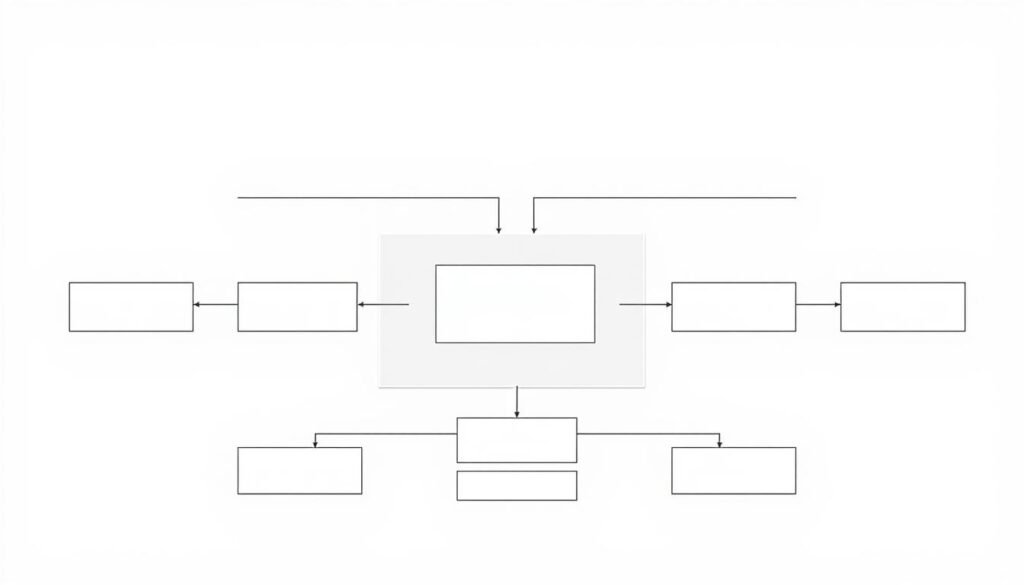Have you ever wondered why some students excel while others struggle to keep up? The secret often lies in their approach to organizing ideas. Choosing the right system can make all the difference in your learning journey.
Three popular styles—Cornell, Outline, and Mind Map—each cater to different needs. The Cornell method is structured and systematic, ideal for fast-paced lectures. Outlines provide a clear hierarchy, perfect for linear thinkers. Mind Maps, on the other hand, are visual and creative, great for brainstorming complex ideas.
Studies show that 67% of students perform better in exams when using organized systems. The key is to match your method with your learning style and the subject matter. Whether you’re a visual learner or prefer a step-by-step approach, there’s a system for you.
In this article, we’ll compare these three methods based on structure, use cases, and adaptability. By the end, you’ll have a clearer understanding of which style aligns with your needs.
Key Takeaways
- Cornell, Outline, and Mind Map are three effective note-taking styles.
- Each method suits different learning styles and lecture formats.
- Organized systems improve exam performance for 67% of students.
- Choose a method that aligns with your learning preferences.
- Consider the subject matter when selecting a note-taking style.
Introduction to Note Taking Methods
Why do some students retain information better than others? The answer often lies in their ability to transform what they hear into meaningful notes. Note-taking acts as a bridge between hearing information and truly understanding it. This process is critical for academic success and long-term retention.
Research from UNC Chapel Hill shows that active note-taking improves comprehension by 40% and retention by 30%. When you write down key points, you’re not just recording facts—you’re engaging your brain. This enhances focus, organizes thoughts, and aids in memory encoding.
Harvard Law School found that students who use structured systems experience less exam stress. Organized notes make it easier to review and recall concepts during high-pressure situations. Digital tools like Goodnotes have also revolutionized modern note-taking, offering flexibility and efficiency.
However, no single method fits all scenarios. The right approach depends on your learning style, the subject matter, and your goals. Whether you prefer visual aids or linear structures, the key is to find a system that works for you.
What Makes a Good Note Taking Method?
What defines an effective way to capture and organize information? A reliable system should balance speed, clarity, and adaptability. Whether you’re in a fast-paced lecture or summarizing a textbook, the right approach can enhance your understanding and retention.
According to Oxford Learning, top traits include simplicity, visual hierarchy, and review-friendliness. A good method should be easy to create, logically organized, and ready for revision. For example, the Cornell system includes a summary section, making it ideal for post-class review.
Different subjects demand different approaches. STEM courses often require diagrams, which the Outline method may exclude. Meanwhile, Mind Maps excel in visualizing complex ideas, making them perfect for creative or non-linear thinkers.
Balancing speed and depth is crucial. During lectures, you need a system that keeps up with the pace. For textbook summaries, depth and detail are more important. The key is to choose a method that aligns with your course and learning style.
Finally, consider the structure that works best for you. Linear methods like Outlines are great for step-by-step thinkers, while non-linear approaches like Mind Maps suit visual learners. The right system saves time, improves comprehension, and helps you stay organized.
The Cornell Method: A Systematic Approach
Ever wondered how a simple page layout can transform your study habits? The Cornell method, developed by Prof. Walter Pauk in the 1950s, is a proven system that enhances learning and retention. Its structured approach divides the page into three sections: notes, cues, and a summary. This layout encourages active engagement and simplifies exam prep.
How It Works
To use this method, divide your page into a 6-inch notes column, a 2.5-inch cues column, and a summary section at the bottom. During class, jot down key points in the notes column. Afterward, use the cues column to write questions or keywords that trigger recall. Finally, summarize the content in the bottom section for quick review.
Pros and Cons
The Cornell method encourages active learning, making it easier to retain information. It’s particularly effective for STEM lectures and textbook summaries. However, the setup can be time-consuming, and it’s less ideal for diagram-heavy content. Digital tools like Goodnotes offer templates to streamline the process.
When to Use It
This method shines in fast-paced lectures, pre-exam reviews, and detailed textbook summaries. Its structured format ensures you capture essential content while leaving space for questions and summaries. If you’re a linear thinker or need a system for long-term study, the Cornell method is a reliable choice.
The Outline Method: Structured and Organized
Looking for a way to keep up with fast-paced lectures? The Outline method is a structured system that helps you organize information clearly. It uses hierarchical bullet points to break down main topics and subtopics, making it easy to follow along during class.
How It Works
This method starts with main topics, followed by nested subtopics and supporting details. For example, in a lecture about constitutional amendments, you might list each amendment as a main point. Underneath, you’d add key phrases or words that explain its significance.
Pros and Cons
The Outline method is ideal for law or humanities lectures, where information is often presented in a linear format. It’s also easy to convert into flashcards for quick review. However, it struggles with nonlinear content, like philosophy debates, where ideas are more interconnected.
When to Use It
This system shines in structured environments, such as conferences, podcast notes, or textbook chapters. It’s especially useful for capturing key points in a fast-paced lecture. For example, an outline comparing constitutional amendments might look like this:
- First Amendment: Freedom of speech, religion, and press.
- Second Amendment: Right to bear arms.
- Third Amendment: Protection against quartering soldiers.
By using the Outline method, you can stay organized and focused, even in the most demanding lecture settings.
The Mind Map Method: Visual and Creative
Ever felt overwhelmed by complex ideas and wished for a better way to organize them? The Mind Map method is here to help. This visual approach turns your thoughts into a structured yet flexible layout, making it easier to connect concepts and brainstorm effectively.
How It Works
Start with a central topic, then branch out into subtopics, ideas, and supporting details. Use images, colors, and lines to show connections. For example, a mind map about World War II might have “Causes” and “Effects” as main branches, with specific events and outcomes as smaller branches.
Pros and Cons
Mind Maps are excellent for enhancing creativity and solving problems. A Goodnotes case study found they boost creative problem-solving by 35%. They’re perfect for project planning or analyzing literature. However, they require more space and aren’t ideal for fast-paced lectures.
When to Use It
This method shines in brainstorming sessions, art history, or connecting themes in novels. It’s also great for interdisciplinary projects where diagrams and visual aids can clarify complex concepts. Whether you’re mapping out a story or planning a project, Mind Maps make it easier to see the big picture.
Comparing Cornell, Outline, and Mind Map Methods
How do different note-taking styles impact your learning efficiency? Each method—Cornell, Outline, and Mind Map—offers unique advantages depending on your needs. Understanding their differences can help you choose the right approach for your studies.
When it comes to speed, the Outline method is the fastest. It’s ideal for capturing key points during a fast-paced lecture. The Cornell method follows, offering a structured but slightly slower approach. Mind Maps, while visually engaging, take the most time to create.
In terms of structure, Cornell is rigid and systematic, making it perfect for STEM subjects. Outlines provide a clear hierarchy, which works well for law or humanities. Mind Maps, on the other hand, are flexible and creative, excelling in brainstorming or visual-heavy fields.
For exams, Cornell users often score 15% higher on conceptual tests due to its summary section. Mind Maps enhance visual recall, while Outlines are easy to convert into flashcards for quick review.
Tool compatibility also varies. Outlines work well on paper, while Mind Maps thrive digitally. Cornell can adapt to both, depending on your preference. Choose the method that aligns with your learning style and subject matter for the best results.
How to Choose the Best Note Taking Method for You
Struggling to decide which note-taking style suits your needs? Selecting the right way to take notes can significantly impact your learning efficiency. Here’s a step-by-step guide to help you make the best choice.
First, assess the pace of your lectures. For fast-paced sessions, the Outline method is ideal. It allows you to capture key points quickly. For slower, reflective classes, the Cornell or Mind Map methods work better, giving you time to process information.
Next, match the method to your learning style. If you’re an auditory learner, the Outline method aligns well. Visual learners benefit from Mind Maps, while tactile learners may prefer the structured Cornell system.
Consider how you’ll use your notes after class. For exam-heavy courses, the Cornell method’s summary section is invaluable. Creative projects or brainstorming sessions are better suited to Mind Maps.
According to an Oregon State University survey, 60% of students combine methods based on the subject. Experiment with hybrid systems, like using Outlines with diagrams, to find what works best for you.
Finally, test your chosen method. Free Cornell templates and apps like Goodnotes can help you get started. The right approach saves time, enhances comprehension, and keeps you organized throughout your course.
Conclusion
Finding the right way to organize your thoughts can transform your academic performance. The best note taking methods depend on your individual needs and preferences. Research from UNC Chapel Hill shows that students who tailor their approach improve their GPAs by an average of 0.5 points.
Experiment with combining techniques for better results. For example, use the Cornell method for lectures and Mind Maps for revisions. Digital tools like Goodnotes offer flexibility, making it easier to adapt to different subjects and tasks.
Start by testing one method for a week and track your progress. Whether you’re a visual learner or prefer structured systems, the key is to find what works for you. Effective note-taking can enhance your learning experience and help you stay organized.
FAQ
What is the Cornell Method and how does it work?
The Cornell Method divides your page into three sections: notes, cues, and a summary. During a lecture, jot down main points in the notes section. Later, add cues or questions in the left column and summarize the content at the bottom. This approach helps organize information for better review.
When should I use the Outline Method?
The Outline Method is ideal for structured lectures or content with clear hierarchies. It uses bullet points and indents to organize main ideas and supporting details. This technique works well for subjects like history or science, where concepts build on one another.
How does the Mind Map Method enhance creativity?
The Mind Map Method uses diagrams to connect ideas visually. Start with a central topic and branch out with related concepts. This approach is great for brainstorming, understanding relationships between ideas, and retaining information through visual cues.
What are the advantages of the Cornell Method?
The Cornell Method promotes active learning by encouraging you to summarize and review material. It’s efficient for studying, as the cues and summary sections make it easy to test your understanding before exams.
Can the Outline Method handle complex topics?
Yes, the Outline Method is effective for complex subjects. Its hierarchical structure allows you to break down intricate material into manageable parts, making it easier to grasp and review later.
Is the Mind Map Method suitable for all learning styles?
While the Mind Map Method is particularly helpful for visual learners, it can benefit anyone by simplifying complex ideas and showing connections between concepts. It’s especially useful for creative or abstract subjects.
How do I decide which method to use?
Choose a method based on your learning style, the subject matter, and your goals. For structured content, try the Outline Method. For active review, use Cornell. For creative or interconnected ideas, opt for Mind Mapping.
Can I combine different note-taking techniques?
Absolutely! Combining methods can enhance your learning. For example, use the Outline Method during a lecture and later create a Mind Map to visualize connections between ideas.









